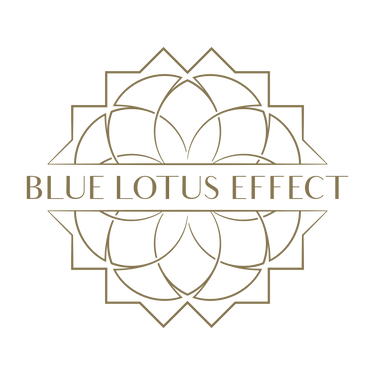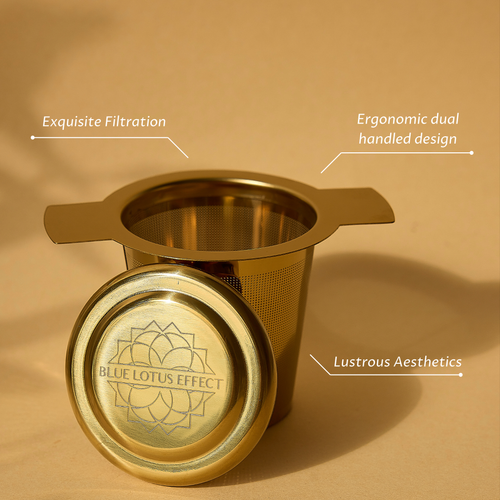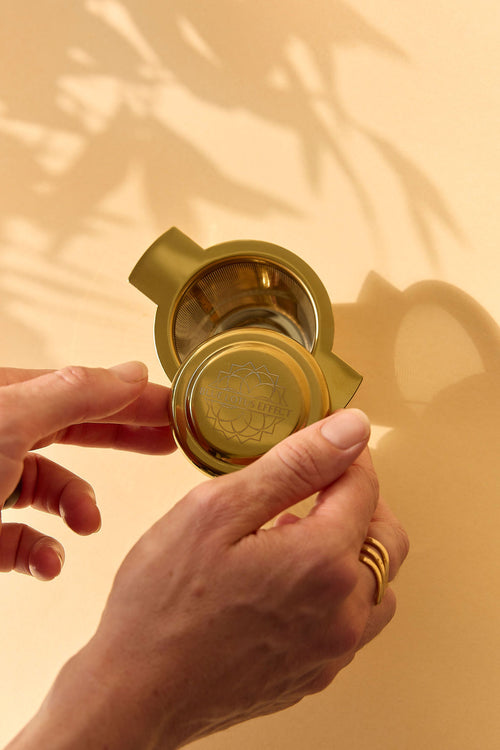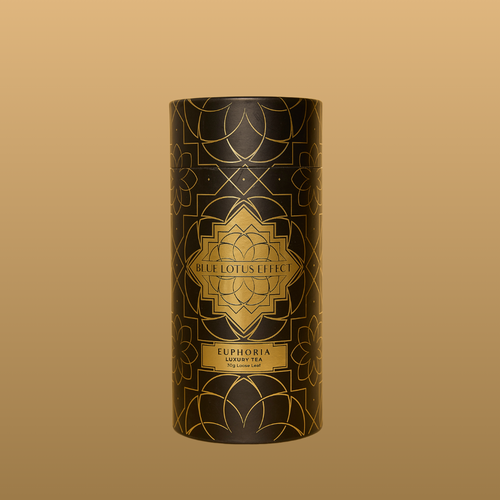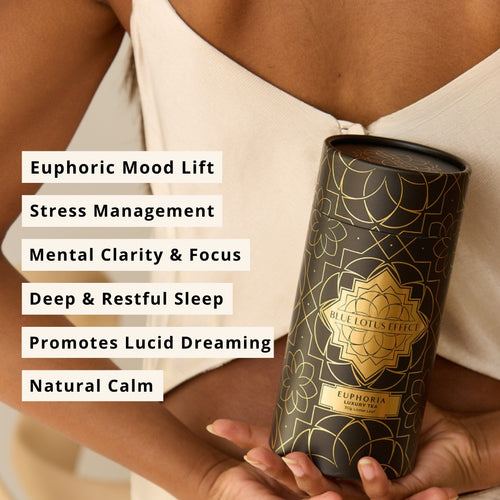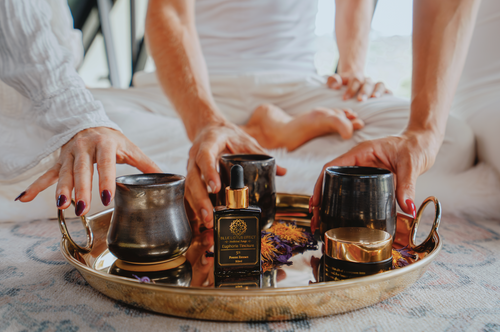Forget the dramatic tales of conquering armies and technological leaps. What if humanity's quiet resilience, its connection to the spiritual, and even its most intimate joys were subtly nurtured by a delicate flower?
We're talking about the blue water lily tea, also known as the blue lotus. While modern narratives often overlook this ancient bloom, a closer look at its profound presence in ancient Egypt suggests that the blue lotus tincture and its milder forms might have played an unsung role in sustaining not just a civilization, but perhaps aspects of the human spirit itself. Prepare to have your perceptions challenged as we delve into the captivating history and potential of this forgotten botanical wonder.
Unveiling the Secrets of Seshen: Blue Lotus in Ancient Egyptian Life
The ancient Egyptians held a deep reverence for the natural world, weaving its elements into the fabric of their daily lives, their art, and their intricate belief system. Among the flora that adorned their temples and tombs, the blue lotus (Nymphaea caerulea), or seshen as they called it , held a particularly esteemed position1 . Serving as the emblem of Upper Egypt alongside the white crown , the blue lotus flowers were far more than mere decoration.
Blue lotus was a ubiquitous motif in Egyptian art and architecture .... Banquet scenes frequently depict individuals adorned with blue lotus blossoms, holding them to their noses to inhale their fragrance, and even wearing the blooms in their hair2 . This wasn't just for aesthetic pleasure; the perfume of the lotus was believed to benefit the dead, offering a connection to new life as followers of Ra . Women even sewed these gently fragrant flowers into their hairstyles, highlighting their sensory and possibly symbolic importance . Furthermore, blue lotus buds and petals were common elements in beaded collars and other forms of jewellery, showcasing their integration into personal adornment and potentially signifying status or spiritual affiliation.
Beyond its artistic representation, the blue lotus held profound mythological significance . In certain versions of the Egyptian creation story, the sun god Ra himself emerged from a blue lotus that rose from the primordial waters of Nun . This powerful imagery linked the flower directly to rebirth and the dawn, mirroring the daily journey of the sun and the cyclical nature of life and death . The Hermopolitan cosmogony specifically highlighted the blue lotus's behaviour – opening in the morning to reveal its golden-yellow stamens – as a direct parallel to the solar disk emerging from the primordial ocean . This connection to creation solidified the blue lotus as a potent symbol of rebirth and renewal .
The blue lotus was also the emblem of the god Nefertem, the "lord of perfumes". This further underscores the importance of its fragrance and its association with beauty, creation, and the divine. The act of being transformed into a lotus is even mentioned in Chapter 81 of the Book of the Dead, stating, "I am the pure one who issued from the fen … Oh lotus belonging to the semblance of Nefertem…". This demonstrates the deep spiritual connection between the individual soul and the blue lotus in the afterlife.
Was Blue Lotus Tea the Pharaohs' Secret to Well-being?
Given the pervasive presence of the blue lotus in ancient Egyptian culture, it begs the question: was its significance purely symbolic? Or did the Egyptians also utilize its potential properties for well-being? While direct evidence of widespread medicinal use is still being explored, the available clues and modern scientific investigations offer intriguing possibilities.
The frequent depiction of blue lotus alongside scenes of feasting and celebration suggests it might have been consumed in some form. One compelling theory is that the Egyptians soaked the blue lotus flowers in wine. This would not only have infused the beverage with the flower's aroma but could also have extracted any potential bioactive compounds. The Egyptians were known to flavour their wine with various ingredients, including dates, honey, and spices. The addition of blue lotus would align with this practice and potentially enhance the experience.
Modern research has begun to shed light on the potential effects of the blue lotus. While initial reports of narcotic alkaloids have not been consistently replicated, studies have revealed the presence of various compounds, including flavonoids and phytosterols. These compounds are known for their potential health benefits, including promoting relaxation and a sense of well-being. One researcher noted that the chemical profiles of fresh and 2,000-year-old lotus samples were remarkably similar, suggesting that the properties of the ancient flower would have been comparable to the modern plant.
The idea that the blue lotus might have possessed "Viagra-like properties" has also emerged, giving new significance to the flower's association with scenes of intimacy and rebirth. The focus on individuals in their reproductive prime in these depictions, often scantily clad and surrounded by fragrant blue lotus, further supports this interpretation. The very word for "scent" in ancient Egyptian shares the same three letters as a root connected to sexuality, underscoring the potential link between the blue lotus's aroma and intimate experiences.
Therefore, it's plausible that the ancient Egyptians, particularly the elite like the pharaohs, regularly consumed blue lotus tea (perhaps infused in wine) not just for its sensory appeal but also for its potential to promote relaxation, enhance well-being, and even support vitality.
Blue Lotus Tincture: A Modern Echo of Ancient Practices?
While the ancient Egyptians may have primarily used fresh blue lotus or infusions, the concept of a concentrated extract isn't entirely foreign to historical practices. Herbal tinctures, created by soaking plant material in alcohol or other solvents, have been used for centuries to preserve and concentrate the beneficial compounds of various botanicals.
In the modern context, blue lotus tincture represents a potent way to potentially experience the flower's effects. While further research is needed to fully understand its mechanisms and benefits, proponents suggest that blue lotus tincture may offer a more concentrated version of the relaxation and mood-enhancing properties associated with the flower.
It's important to note that while the historical use of blue lotus in ancient Egypt is well-documented, modern claims regarding its specific medicinal or psychoactive effects require careful consideration and further scientific investigation. However, the rich history and the preliminary scientific findings do suggest that the blue lotus, whether in the form of blue water lily tea or a more concentrated blue lotus tincture, holds a fascinating potential that warrants continued exploration.
The Nubian Connection: Could Ancient Trade Have Spread the Lotus's Influence?
The ancient Egyptians maintained close relationships with their southern neighbours in Nubia, engaging in extensive trade that brought a variety of goods, including exotic spices, into Egypt. While the sources do not explicitly state that blue lotus was a key trade commodity from Nubia, the presence of the Nubian god Mulus depicted in Egyptian temples, such as the island Temple of Kalupia on Lake Nasser, signifies a cultural exchange.
The bustling market in Aswan, Egypt's hottest city and a gateway to Nubia, was filled with the heady aroma of exotic spices imported from the deep south, potentially including plants with psychoactive or well-being properties. Given the blue lotus's significance in Egyptian culture, it's conceivable that its knowledge and perhaps even the flower itself were part of this exchange, further embedding its importance within the Nile Valley civilisation.
Quick Takeaways: The Enduring Legacy of Blue Lotus
- The blue lotus (Nymphaea caerulea) held immense cultural and religious significance in ancient Egypt, symbolising rebirth and associated with key deities like Ra and Nefertem.
- Ancient Egyptians frequently depicted blue lotus flowers in their art, using them for adornment in daily life and in funerary rituals, suggesting a deep sensory and symbolic connection.
- The consumption of blue lotus, possibly soaked in wine to create a form of blue lotus tea, may have been practiced for its potential relaxing, mood-enhancing, and even vitality-supporting properties.
- Modern blue lotus tincture offers a concentrated form of the flower's potential benefits, echoing ancient practices of herbal extraction.
- Trade and cultural exchange with Nubia likely contributed to the blue lotus's presence and importance in ancient.
Conclusion: Reimagining the Role of a Humble Bloom
Perhaps the story of humanity's progress isn't solely one of grand battles and monumental constructions. Maybe, woven into the fabric of ancient societies, were the subtle yet profound influences of the natural world – the aromas that soothed, the symbols that inspired, and the botanicals that gently nurtured well-being.
The blue lotus, so prominently featured in the life and afterlife of ancient Egyptians, offers a compelling case for the power of a single bloom to contribute to the cultural, spiritual, and possibly even physical sustenance of a civilisation. As we continue to explore the potential of blue lotus tea and blue lotus tincture, we may just rediscover a key to understanding the enduring connection between humanity and the natural world, a connection that perhaps played a more significant role in "saving" aspects of our shared human experience than we ever imagined.
FAQs: Unveiling More About Blue Lotus
1. What is blue water lily tea made from?
Blue water lily tea, also known as blue lotus tea, is typically made from the dried flowers of the Nymphaea caerulea plant18 . These flowers can be steeped in hot water to create a fragrant and potentially relaxing beverage7 .
2. What were the main effects of blue lotus tea in ancient Egypt?
Based on artistic depictions and modern research, blue lotus tea (likely consumed in wine) may have been used for its pleasant aroma, potential to induce relaxation and a sense of well-being, and possibly even for its aphrodisiac properties5 ....
3. Are there any scientific studies on the effects of blue lotus tincture?
While some preliminary research has identified compounds within the blue lotus that have potential biological activity, more specific studies are needed to determine the precise effects and benefits of blue lotus tincture in humans. Many current claims are based on traditional use and anecdotal evidence5 ....
4. Is blue lotus tea legal in Australia?
The legality of blue lotus tea and other blue lotus products can vary. It's essential to check the current regulations in Australia or any other specific location before purchasing or using them.
5. How does blue lotus relate to the concept of rebirth in ancient Egyptian mythology?
The blue lotus was deeply connected to the myth of creation, with the sun god Ra believed to have emerged from a blue lotus rising from the primordial waters3 . This imagery made the blue lotus a powerful symbol of rebirth, renewal, and the cyclical nature of life and death, influencing funerary beliefs and practices2 ....
What are your thoughts on the potential power of the blue lotus in ancient times? Share your insights and questions in the comments below!
References:
Curtis Ryan Woodside. "Ancient Egypt & Nubia's Forgotten History On The Nile (FULL DOCUMENTARY) MEGA EPISODE." YouTube, uploaded by Curtis Ryan Woodside
Geraldine Pinch, Egyptian Mythology: A Guide to the Gods, Goddesses, and Traditions of ... - Geraldine Pinch - Google Books.
Ian Shaw and Paul Nicholson, Full text of "THE BRITISH MUSEUM DICTIONARY OF ANCIENT EGYPT BY IAN SHAW PAUL NICHOLSON".
"The Lotus in Ancient Egypt – The Curious Egyptologist." The Curious Egyptologist, June 11, 2021.
Real Royalty. "The Narcotic Flower That Seduced Ancient Egypt's Royals | Private Lives Of Pharaohs | Real Royalty." YouTube, uploaded by Real Royalty
